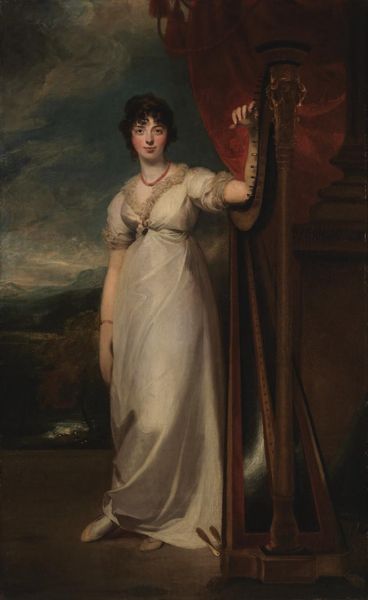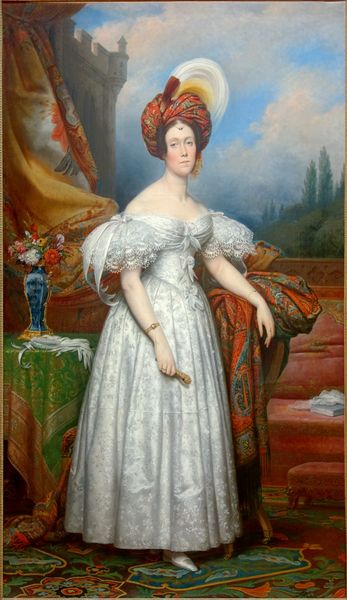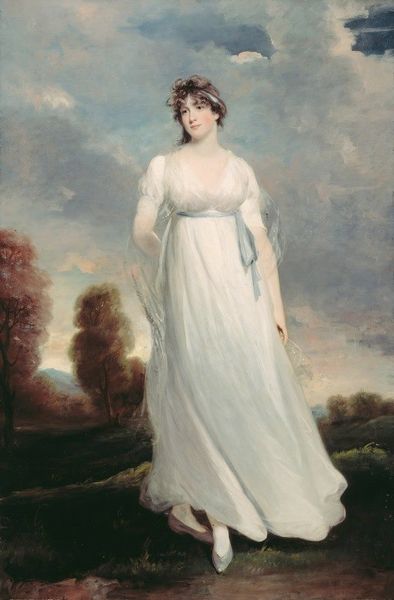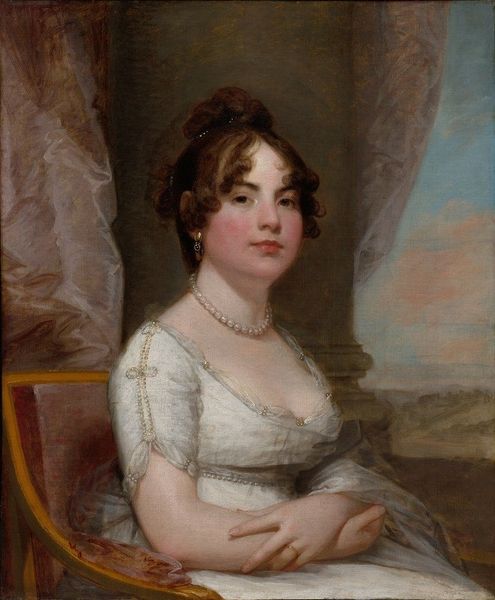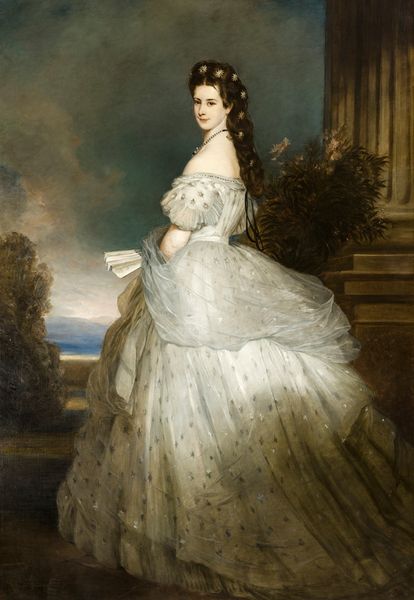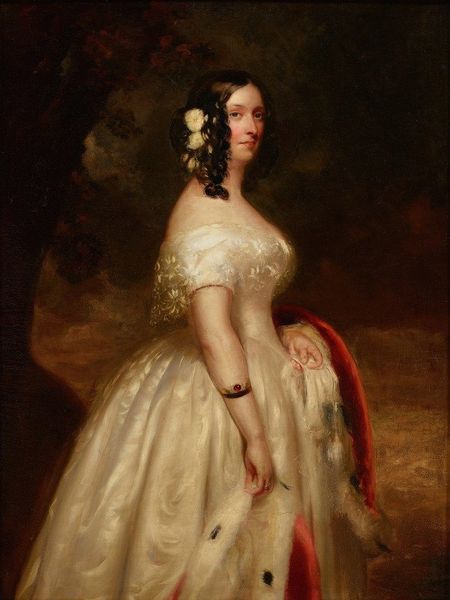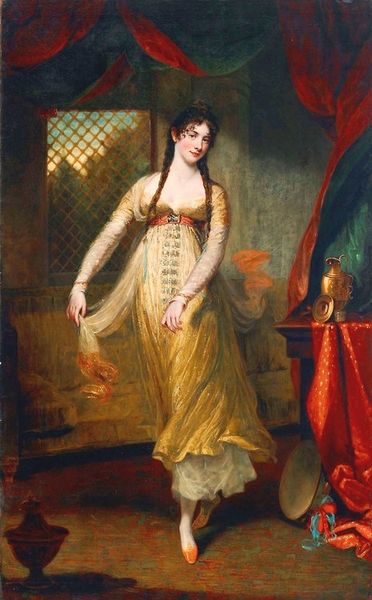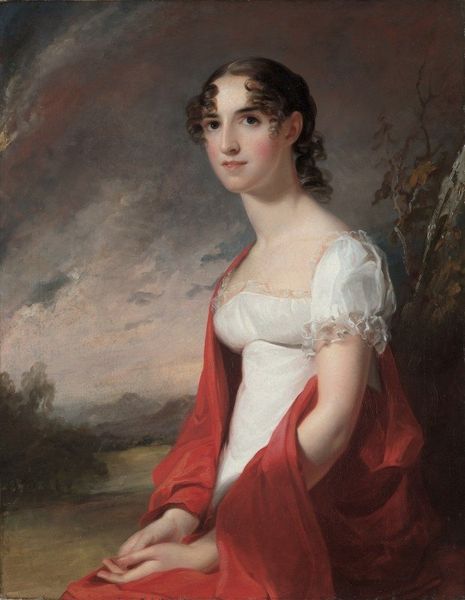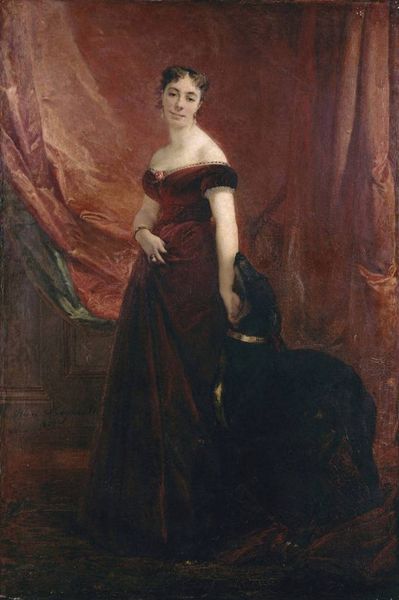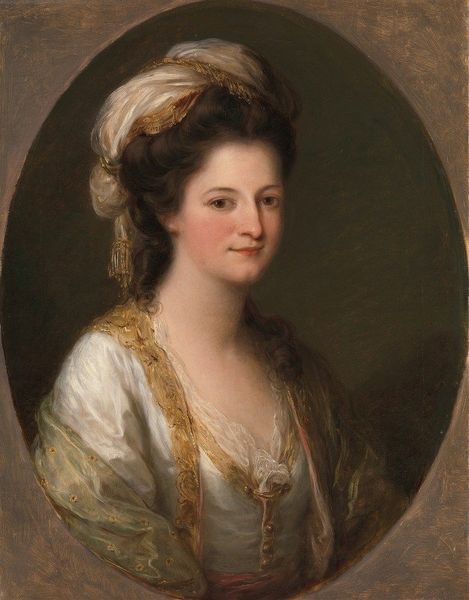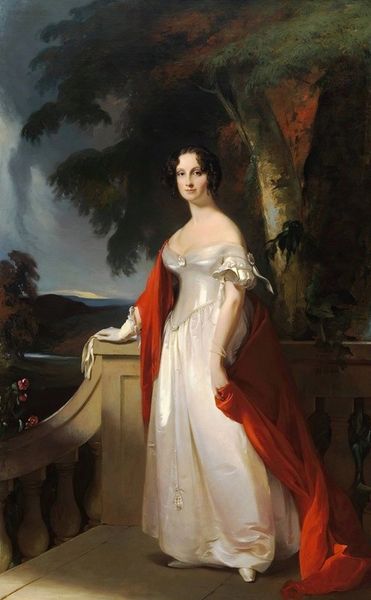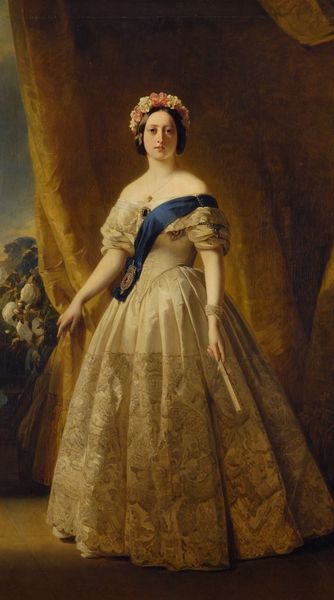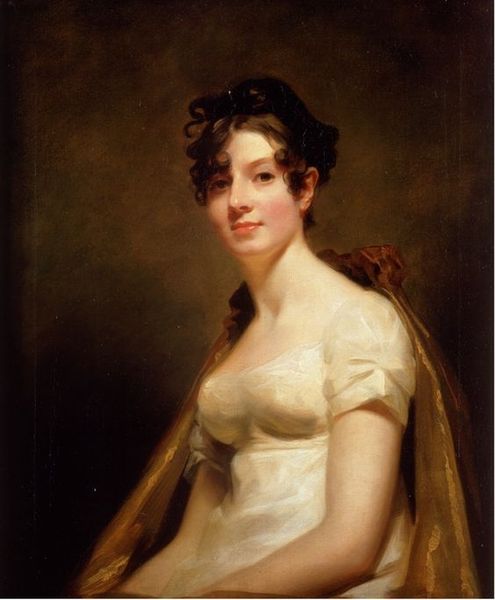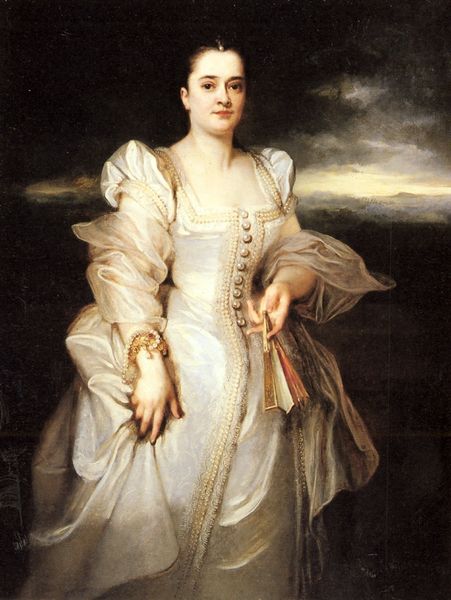
painting, oil-paint
#
portrait
#
figurative
#
painting
#
oil-paint
#
romanticism
#
genre-painting
Copyright: Public Domain: Artvee
Editor: This is Thomas Sully’s "Lady with a Harp – Eliza Ridgely" from 1818. The luminous quality of the painting immediately strikes me. She almost glows! What elements draw your attention when you look at this portrait? Curator: It’s important to see portraits like this as actively shaping and reinforcing social hierarchies. Consider the very act of commissioning a portrait like this. It wasn't just about likeness, but about projecting an image of wealth, status, and cultural refinement. Sully positions Eliza within a lineage of aristocratic portraiture while hinting at a particular type of femininity. Editor: Refinement, definitely. The harp, the dress, even the landscape in the background seem carefully selected to project that. Curator: Precisely! And who has access to these signifiers? Who controls the narrative? In the early 19th century, displaying such accoutrements served to legitimize the power and privilege of families like the Ridgelys. Editor: So, it's not just a pretty picture, but a statement? I'm curious, how would the reception of a piece like this have varied among different audiences at the time? Curator: Enslaved people or working-class individuals, for example, likely would have interpreted this image quite differently than Eliza's peers. For those outside of elite social circles, it would be a reminder of exclusion. By understanding the social dynamics, we gain insight into how art serves not just aesthetic purposes but reinforces power structures. Editor: This is really helpful, thank you. I hadn’t really considered it from the viewpoint of its place in social history. Curator: Examining art as an active participant in society, and considering all possible readings of the portrait makes viewing so much more meaningful!
Comments
No comments
Be the first to comment and join the conversation on the ultimate creative platform.
